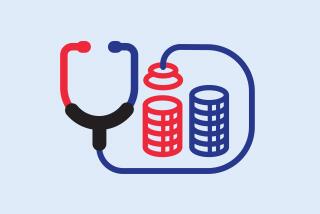How Obamacare reduces premiums for some without subsidies

The launch of Covered California, the state’s marketplace for health insurance, has prompted a new line of argument over the 2010 healthcare law among readers of The Times. Some supporters of the law say they’ve found lower prices for insurance through the new state exchanges; others (some of whom say their premiums are skyrocketing) insist that’s impossible.
It’s not, and I’ll explain in a minute. But first, here’s an excerpt from the comments on Sunday’s editorial about the extremely troubled rollout of the federally run exchanges (edited to correct the occasional typo):
A reader identified as “einsteinsgirl” wrote: “I purchased a plan on Covered California and my premium will be lower than the one I purchased on the individual market. I am a woman. Maybe that’s why? Under Obamacare a woman cannot be charged more than a man for the same insurance policy.”
Reader “Chris Crusade” responded: “Einsteinsgirl, it’s inconceivable to me that an unsubsidized Obamacare premium can be lower than current premiums. Unsubsidized premiums must provide revenue not only for coverage but also for subsidies for others based on income, coverage for preexisting conditions and additional benefits mandated by Obamacare.
“If your Obamacare premium is lower, my guess is that it’s because your premiums will be subsidized based on income. If so, I hope you are grateful to others for providing the subsidy.”
To which “einsteinsgirl” responded: “Chis Crusade, I’m sorry but you ARE wrong. I was paying $650.00 a month for a monthly premium before. I bought a plan that will cost me $550.00 a month for the same coverage through Covered California. I know who the providers are on the plan, because I checked on the insurer’s website to see who the providers were before I went back to Covered California and bought the plan through them. That’s a $1,200.00 a year savings for me.”
On Monday morning, reader “JohnR22” chimed in, writing, “Einsteinsgirl: You miss Chris’ point. Your premiums are lower because you are SUBSIDIZED under Obamacare because of your income level. Do you understand? You are paying less than market value because you’re getting a welfare subsidy ... paid for by somebody else.
“So, don’t smirk about how wunnerful Obamacare is. If anything, you should be smirking because you are one of the 47% who is a ‘taker’ instead of a contributor.”
“JohnR22” apparently hasn’t seen reports about the Tax Policy Center’s updated research, which shows that the percentage of Americans paying no federal income taxes has dropped to 43%. And one might ask if one can really be a “taker” if one pays payroll taxes, as do two-thirds of those who owe no federal income taxes, or if one is retired and no longer earning enough income to be taxed, as are about a fifth of the people in that category.
But I digress. I don’t know “einsteinsgirl,” but I do know someone who’s been buying insurance in the individual market who will be saving hundreds of dollars monthly on premiums next year. The plan she plans to buy through Covered California is much like her current coverage, and it’s from the same insurer. And she won’t be receiving any taxpayer subsidies.
When my acquaintance (who will remain nameless here) told me about this, I couldn’t understand how this was possible. So I asked Stephen M. Shivinsky, a spokesman for Blue Shield of California, what the explanation might be, and he noted the special circumstances surrounding grandfathered health plans.
Under the 2010 Patient Protection and Affordable Care Act, Shivinsky noted, plans that existed before the law was enacted are exempt from most of its new rules, including the one banning insurers from basing premiums on a person’s medical history. This sort of “medical underwriting” is what has forced people with preexisting conditions or high-risk occupations to pay more for coverage, assuming they could obtain it at all.
My acquaintance, who is nearing retirement age and not in Wheaties box shape, had been renewing her insurance policy year after year despite the premium hikes because she was afraid she wouldn’t be able to buy coverage otherwise. To renew the policy again for next year, her insurer demanded yet another increase, reflecting the continued medical underwriting within that grandfathered plan.
By moving to the exchange, my acquaintance will join a larger pool of consumers that is expected to be less risky on average. That’s why her insurer can offer her coverage similar to her grandfathered plan for considerably less.
But the scales tip both ways. Just as the exchanges are helping cut premiums for “einsteinsgirl” and my acquaintance, they are asking younger, healthier people to pay more for coverage. The latter is absorbing some of the risk that the former used to have to shoulder -- assuming the latter carries coverage rather than just paying the tax penalty the law imposes on those who don’t obtain insurance.
This is a point that supporters of the law don’t acknowledge often enough. Some critics of the law say it forces younger, healthier people to subsidize sicker, riskier ones. That’s one way to look at it; another is that it requires people to pay more when they’re young and healthy so that they’ll pay less when they’re older and/or have higher medical costs. After all, insurance is about pooling risk with others, which means you’re almost always overpaying or underpaying relative to the share of costs you impose.
It’s also worth remembering that younger and healthier people can qualify for subsidies from the taxpayers too if their income is less than four times the federal poverty level. So some of the costs shifted onto the young and healthy will wind up instead on the taxpayers. Still, just because a person’s premiums are going down through the exchange, that doesn’t mean the taxpayers are subsidizing him or her directly. It may simply be that the person is moving out of a higher-risk niche created by the insurer and into a broader risk pool.
ALSO:
Camels: 100 years and still killing
Heartburn’s a symptom, not a disease
Government shutdown: Plenty of lessons to go around
Follow Jon Healey on Twitter @jcahealey and Google+
More to Read
A cure for the common opinion
Get thought-provoking perspectives with our weekly newsletter.
You may occasionally receive promotional content from the Los Angeles Times.











